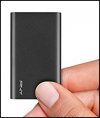Dont Knowler
Member
- Joined
- Apr 4, 2017
- Messages
- 71
- Reaction score
- 64
- Location
- Moscow
- Country
- Russian Federation
- Dash Cam
- Viofo A119S (front and rear)
Dear OCD Tronic,You'll just have to be patient. The problem is not being ignored.
I appreciate your reaction, and your calls for patience. Actually, I am patient, and I am ready to wait for Viofo engineers to resolve the hot pixels problem. My sincere opinion is that the Viofo A119S V.2 is not a bad cam, and with hot pixels fixed (and a metal lens holder, perhaps) it will become a good cam. Otherwise I would have returned my both cams. As I said, I am still waiting for the "good" firmware revision to come - I have not given up hope.
What I hate is when someone (not you) tries to make me believe that white dots all around the screen are tolerable, even after Viofo engineers admitted that this IS a problem.
Last edited:

